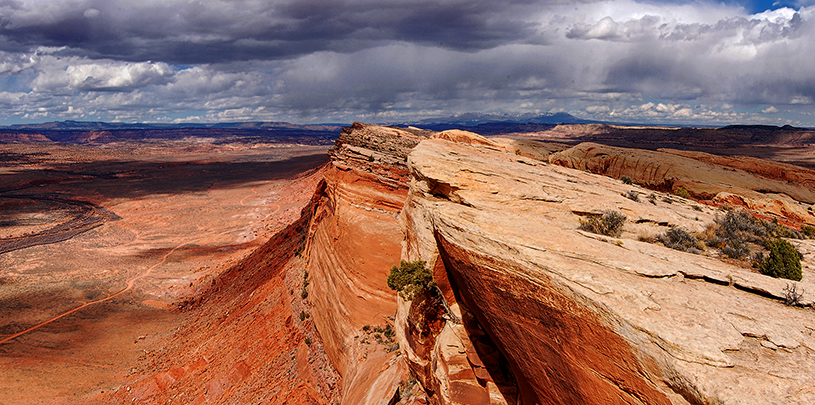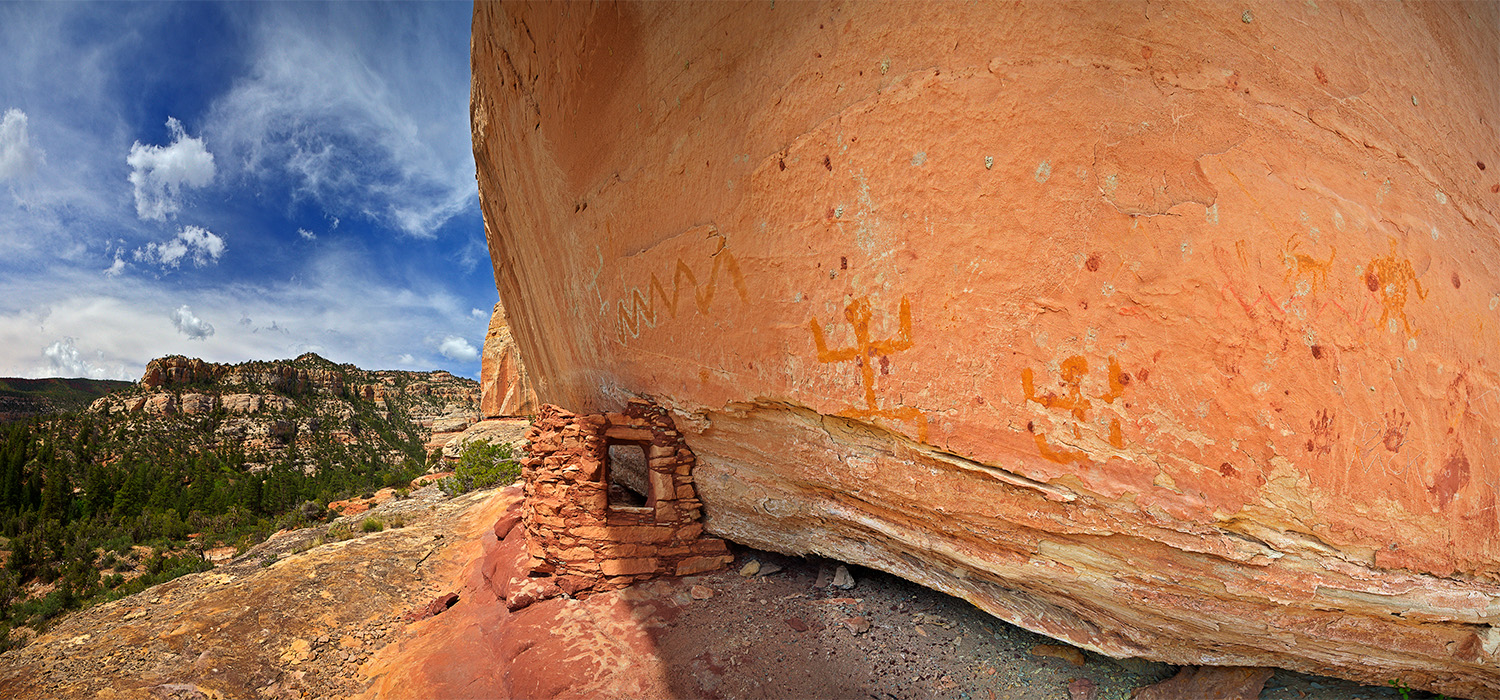
 by Tim Peterson, Cultural Landscapes Director
by Tim Peterson, Cultural Landscapes Director
In these challenging times, Americans are focused on a global pandemic and protest in the streets around systemic racism. With these immense, traumatic issues weighing on our minds, it may seem like a bit of a break to examine what’s going on with Utah’s national monuments. Although some of this monument news hasn’t made headlines, there are important developments to track for both Bears Ears and Grand Staircase-Escalante.
First, a quick recap. As faithful readers will no doubt recall, in late 2017 President Trump slashed Bears Ears by 85 percent, and Grand Staircase by nearly half. We promptly sued in federal court, as did others. Lawsuits (one consolidated case challenging the reduction of Bears Ears and another challenging the reduction of Grand Staircase) were filed by the five tribes of the Bears Ears Inter-Tribal Coalition (the Hopi, Navajo, Ute, Ute Mountain Ute, and Zuni nations) for Bears Ears and a myriad of conservation, science, and outdoor business interests for both monuments.
In 2019, the Department of Justice moved to dismiss the cases, arguing that the president acted lawfully. The judge denied the motion. In November of 2019, we filed amended complaints underlining our reasons for suing and demonstrating our right to sue, called “standing.” In 2020, both sides (all the plaintiffs including the Grand Canyon Trust and the government) filed motions arguing that the law is on our respective sides and asking the judge to rule without an extended trial.
Those challenging the president’s actions argue that the Antiquities Act of 1906 empowers presidents only to declare, not to dismantle monuments designated by previous presidents. We argue that only Congress has the power to reduce or eliminate national monuments.
The government’s response has zeroed in on the Antiquities Act’s language directing that monuments be “confined to the smallest area compatible with proper care and management of the objects to be protected.”
To support these points of view, each side has presented a series of additional arguments about congressional intent, legislative history, and policy. Most recently, the government has argued in the Bears Ears case that the five tribes of the Bears Ears Inter-Tribal Coalition as well as others associated with a plaintiff group led by Utah Diné Bikéyah have not proved their standing to challenge the president’s monument reduction.
Now, all parties have filed everything necessary for the court to deliberate and decide. Next come oral arguments. A decision may be issued later this year.
As the wheels of justice turn, the economic and practical slowdown associated with the coronavirus have lessened direct and immediate threats to the integrity of the monuments.
A uranium mine, partially dug out in 2018, sits idle within the original boundaries of Bears Ears, and coal, oil, and gas have not yet been leased on lands cut from the monuments. Proposals to mine alabaster in the original Grand Staircase and to construct a maze of new mountain bike trails, a hiking trail, campsites and yurts in the original Bears Ears near Goosenecks State Park are still in development. An off-road vehicle outfitter has applied for permission to carve out a new road for all-terrain vehicles on state lands within Bears Ears. We’re awaiting recreation, transportation, and cultural resource plans under the new plans for the shrunken monuments as well as for pinyon and juniper deforestation projects that we beat back last year to be re-issued under the new monument management plans.
Near the original boundaries of Bears Ears and just a few miles from the Ute Mountain Ute community of White Mesa, the same uranium company that successfully lobbied to shrink the monument’s boundaries is seeking to import radioactive waste from Estonia.
You read that right. The Estonian government won’t allow the material to be disposed of at home, so radioactive waste produced at a metals-processing facility could soon be shipped around the globe to a uranium mill next to Bears Ears.
But isn’t a uranium mill meant for processing uranium ore, usually rock mined nearby? Ordinarily, yes, but since the 1990s the White Mesa Mill has been accepting radioactive waste streams that contain some uranium. If the company runs the waste through the milling process to extract whatever nominal amount of uranium is found in the sludge (one half of one percent uranium in this case), the rest can be dumped on the mill’s property — forever.
The last three and a half years have brought unprecedented change for Utah’s national monuments, from a long-overdue national monument with Native nations in the driver’s seat at Bears Ears in 2016 to the largest reduction of public lands protections in American history in 2017. We will not rest until the original vision of these monuments is restored.
On October 8, 2021, President Biden restored full protections to Bears Ears and Grand Staircase-Escalante national monuments. Send a personal note of thanks to President Biden.

Cultural landscapes are full of stories, artifacts, and resources to appreciate. Here's how ›
A small victory in the legal case challenging Daneros uranium mine, near Bears Ears National Monument.
Read MoreBears Ears petroglyph panels and cultural sites protected by new proposed management plan.
Read MoreFind out how the Bureau of Land Management is planning to protect old-growth forests, creeks, canyons, fossils, and more in Grand Staircase-Escalante National Monument.
Read More